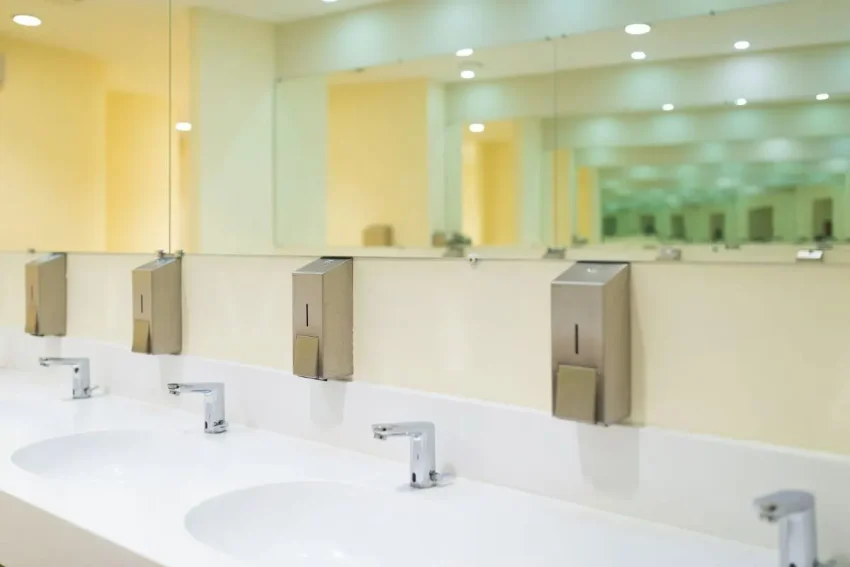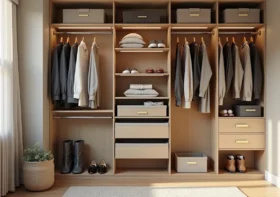How a Motion Sensor Bathroom Faucet Elevates Hygiene & Design

Faucets that operate through motion sensors are cleaner and can be ideal in bathrooms with high traffic. They are going to be convenient when many people need to wash their hands in a bathroom throughout the day since they don’t need to touch any germ-covered handles.
The operations are effortless, and young children can quickly figure out how they work. If you want to wash your hands after gardening, you can do so without touching the handle. Many also feel that the entire experience is often luxurious, and the basin will look like it has a curated design rather than a utilitarian addition. The guests will notice this, and it can amaze small children, as owners, you can gain confidence that you’re meeting the standards of cleanliness in your home.
Gleaming sensors are also recommended by interior designers because they know that they’re going to make the overall tone of the room more refreshing. A motion sensor bathroom faucet that can turn the water on with just a wave of the hand will be convenient because it’s going to avoid germ transfer. After a minute, the water will automatically stop when the sensor doesn’t detect the hands, and it can help cut down on utility bills.
Contents
What are the Other Advantages to Know?
Redefining Cleanliness in the Powder Room
Traditional faucets need twisting and turning, and each contact can build soapy residues that can build up over time. On the other hand, it can be different with infrared sensors because these technological advancements can detect hands in milliseconds, and they’re going to start the flow automatically. When the hands are removed, the stream will stop, and there’s no need for the soapy fingers to touch the hardware. It’s going to make cleaning easier, and there will be less limescale.
The packages can also come with battery packs that are responsible for powering the sensor and a control box that manages the water flow. Most companies are going to place the new faucet and mount it seamlessly in your bathroom, so you don’t have to do anything.
They’re going to fasten the battery inside the control box and connect fittings to the power line and data cable, so everything is all set up for you. You can see more about cabling systems when you click here.
Form That Follows Function
They’re going to look aesthetically pleasing and minimalist because you won’t have to see a lot of fittings. Instead, the control box is concealed beneath a vanity cabinet, and this can result in a seamless look. It can also complement classic marble counters for a more modern feel or pair well with concrete tabletops.
The design requires a single hole for the water to go through, so it will pair well with vessel sinks or even drop-ins. It’s very flexible, and the design creates various possibilities, so you’ll have a cleaner look.
What’s Inside the Tap’s Technology?
Sensors are going to forward signals to the valve when they detect your hand, and most of the time, they’re placed at the spout. They use infrared beams to detect the presence of objects, and the signals will control the solenoid valve. When there’s no signal, then the valve that controls the water will close so the water stops flowing from the faucet. The presence of an object will send a positive signal, so the valve will be pulled to open the water flow.
Every touchless faucet will need power sources like dry-cell batteries before they can work. Some manufacturers may utilize low-voltage current from AC transformers that you can read more in this URL: https://www.britannica.com/technology/transformer-electronics, or they may use alkaline types to power the faucets.
Installation Made Simple
Some might think that setting up the entire thing is complex, but they may be surprised how little specialized labor is required. These accessories will arrive at your home in a complete package with connectors and supply lines so you can finish changing your taps in a day.
Maintenance is also easy, where you just make sure that you clear the gunk from the sensors so it can pick up nearby movements better. A good wipe with a damp cloth and a splash of mild detergent can remove any grime, and make sure to check for any loose parts to tighten them.
Noticeable Long-Term Advantages for Homeowners
When you’re used to the motion-sensor faucets, you can actually notice that there are fewer water stains around your fixtures because the shut-off valves will minimize unnecessary water use. Those families that are juggling morning routines can just walk up to the sink and get the water they need without adjusting the handles, so it’s faster and more convenient.
In homes where the elderly reside, it’s highly recommended to get touchless fixtures, especially if they have arthritis, which makes gripping objects more painful. There’s also an undeniable increase in perceived value when you decide to sell your home. Realtors will be able to highlight sensor-based taps to potential buyers who will see this as a modern-day investment. It’s more hygienic, and it can improve their everyday tasks like washing dishes in a significant way.
Future-Ready by Design
This is a future-proof design that can be sustainable, and many local councils are now incentivizing homeowners when they get these low-flow fixtures. Their water conservation is very high, and most of the models are in line with the building codes in your area. They have greater efficiency, and they’re easier to install.
Also, there are a lot of eye-catching and durable materials that can last for years. They can be made up of stainless steel that will prevent fingerprints and water spots from forming, and they can easily resist corrosion. Clean them without the use of abrasive chemicals, and these sensors can function during a power outage with the LED lights flashing when it detects hands.
Pre-set temperature can also be arranged during installation to prevent injuries from hot water. With its heavy-duty construction, it’s going to be long-lasting, and it can be compatible with a lavatory sink or a vanity top. Lifetime limited warranties are also available, and the best fixtures have certifications from the EPA or ADA for compliance.



